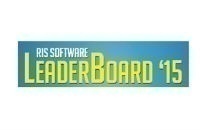3 Payment Trends Overtaking the Retail Industry
Does your business offer cashless payments?
If not, this is something you may want to consider.
The pandemic accelerated the digitization of the payments industry by at least two to three years. Lockdowns, restrictions, and ongoing customer health concerns upended daily life in ways that trickled down into how people are shopping.
Consumer habits have now completely changed from the last decade and will likely continue to evolve as new situations develop.
According to Insider Intelligence, worldwide retail e-commerce sales are projected to total over $6.179 trillion by 2023, making up a 22.3% share of total retail sales. This is up from $3.351 trillion and 13.8% in 2019.
Along with this shift in customer behaviour and spending is a shift in how customers are paying for their products. In an effort to streamline the shopping experience for both virtual and in-store customers, many merchants and payment processors are trying out experimental new payment methods:
1. Digital wallets
A digital wallet is a virtual version of the same wallet you use every day. It stores digital versions of your different payment methods—credit cards, debit cards, loyalty cards, bank account info, and more—in a single app or web platform. Digital wallets can be used online in an e-store or brick-and-mortar store via a point-of-sale solution.
Digital wallets are not new—but the increase in their usage is. According to the 2022 Commerce and Payments Trends Report, 53% of merchants plan to expand payment methods in 2022, and of those, 60% are going to add digital wallets.
In a separate report, Payments.com estimated that 4.4 billion global consumers are going to shop with a digital wallet by 2023, which will account for 52% of global e-commerce payments. As for in-store usage, they estimate that 1.6 billion global consumers will use digital wallets at the point of sale in 2023, which will account for 30% of POS payments.
“With the increased acceptance of digital transactions, coupled with consumer preference, there’s going to be an acceleration in [digital wallet] usage, even more than there already has been,” said Dave Duncan, EVP, chief product officer at Global Payments.
2. Pay by link
One of the newer payment solutions on the market, paying by link is a highly effective way of simplifying the checkout process. It has the potential to cross all retail segments, whether it’s online or on-site.
In it, a merchant will be able to automatically generate and send payment links to customers using text, email, chat, and QR codes. These links use one-time-use URLs that take customers to a PCI-compliant hosted checkout page. From there, they simply fill out their payment information. No more filing out extensive checkout fields!
Companies are already using pay-by-link transactions in different ways: from invoicing/billing to selling via web-based chat to email remarketing. Customers can even pay by link in person or over the telephone (sent to SMS) if the situation calls for it.
3. Buy now, pay later
A buy now, pay later (BNPL) arrangement is a point-of-sale loan that allows consumers to make purchases immediately and finish paying at a future date.
BNPL is already proving to be both convenient for consumers and lucrative for businesses. Research by the Strawhecker Group has shown that 55% of consumers tend to spend more using buy now, pay later than they ordinarily would when using other payment methods.
So what exactly is buy now, pay later, and how does it work?
In a BNLP transaction, a consumer would make a small down payment towards the purchase and then pay the balance off in a predetermined number of installments that are scheduled on a regular basis. In an ideal situation, the consumer would be able to apply for a BNPL at checkout and get approved in a matter of seconds.
Unlike regular loans, BNPL plans don’t charge interest and are easier to get approved for than traditional credit cards, lines of credit, or loans.
Also, while the mere act of applying for a loan can potentially hurt your credit score, obtaining a BNPL plan won’t affect it at all. Late payments or failing to pay can, however, so it’s best to make your payments on time.
“The recent surge in BNPL transactions can be attributed to several factors, including rising merchant adoption, its omnichannel application, flexibility, and loyal youth consumers,” said Gaylon Jowers, president at TSYS Issuer Solutions SEVP at Global Payments.
BNLP has also proven to have advantages over credit cards, which charges interest on unpaid balances and can end up costing more for consumers who try to repay small amounts over time. Buy now, pay later transactions don’t have that kind of problem—you don’t get charged interest for paying in installments.
Which option is right for your business?
With all of these new e-commerce trends surfacing (and some fading out), many retailers don’t know which cashless payment solutions to offer—or if they should offer them at all.
The true question is: can you afford not to explore cashless payment solutions given the rapid changes in the industry?
The answer is, of course, that it depends. It depends on your product and your market and what you feel your customers will value. But judging by the current state of online shopping and the strong reception that cashless payment solutions are getting so far, it’s probably worth it to take a closer look.
If you’re unsure or curious about any or all of the payment trends mentioned above, Magstar Total Retail can help guide you on what options make the most sense for your business. We do our best to offer the right integrations to our core POS offering and want to do right by both you and your customers.
Connect with Magstar President Steven Greenwood to see how Magstar can help.
RECENT POSTS
 ERP Solutions: Creating Customer Loyalty at Every Touch PointERP benefits customer satisfaction in the retail environment; this [...]
ERP Solutions: Creating Customer Loyalty at Every Touch PointERP benefits customer satisfaction in the retail environment; this [...] 5 Reasons to Implement a Mobile POS System at Your Retail ChainNever have your customers waiting in line again with [...]
5 Reasons to Implement a Mobile POS System at Your Retail ChainNever have your customers waiting in line again with [...] RIS Retail Software Leaderboard 2015 Recognizes Magstar Inc as a Top Provider of Retail SoftwareMagstar places Top 5 on the RIS Retail Software [...]
RIS Retail Software Leaderboard 2015 Recognizes Magstar Inc as a Top Provider of Retail SoftwareMagstar places Top 5 on the RIS Retail Software [...]